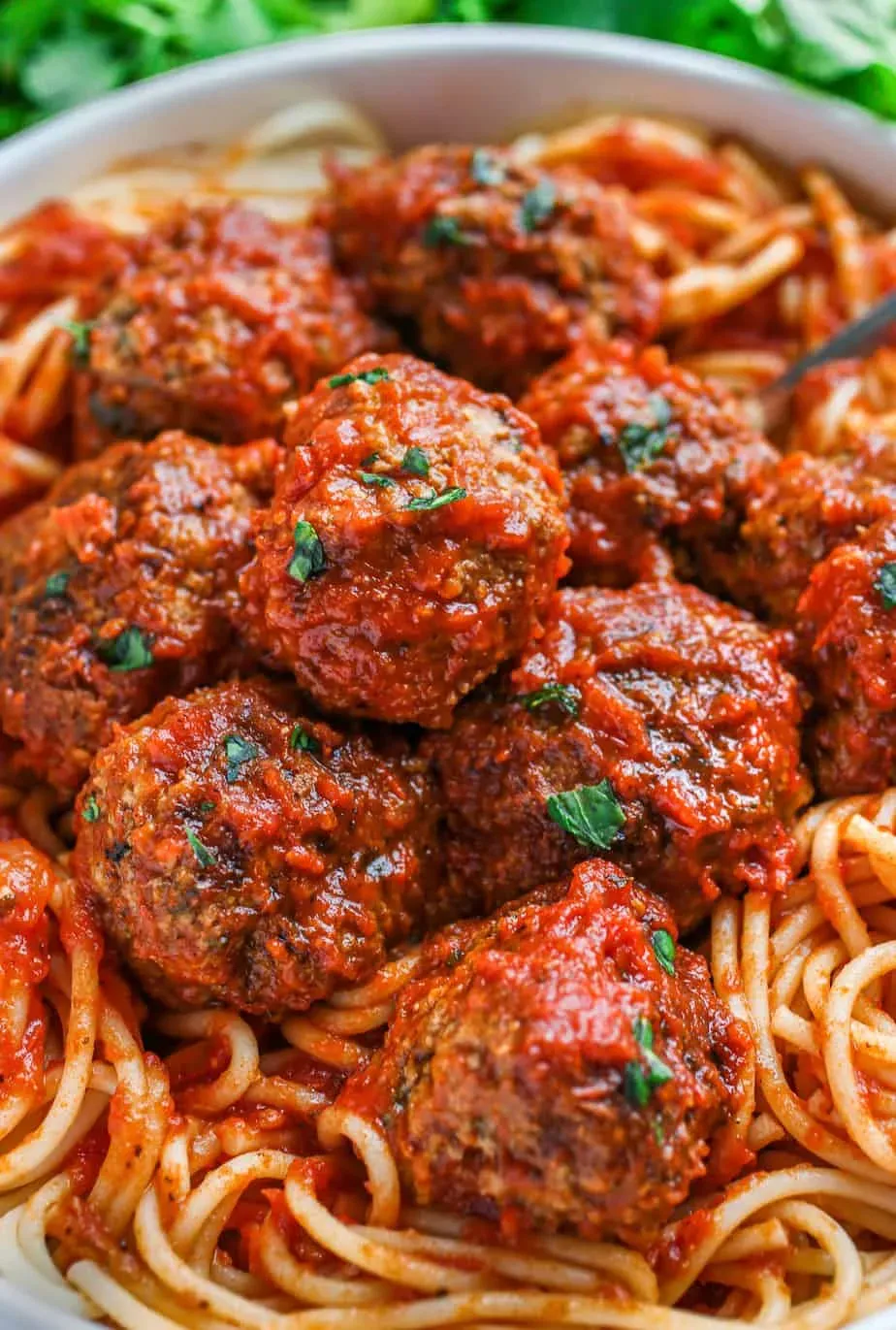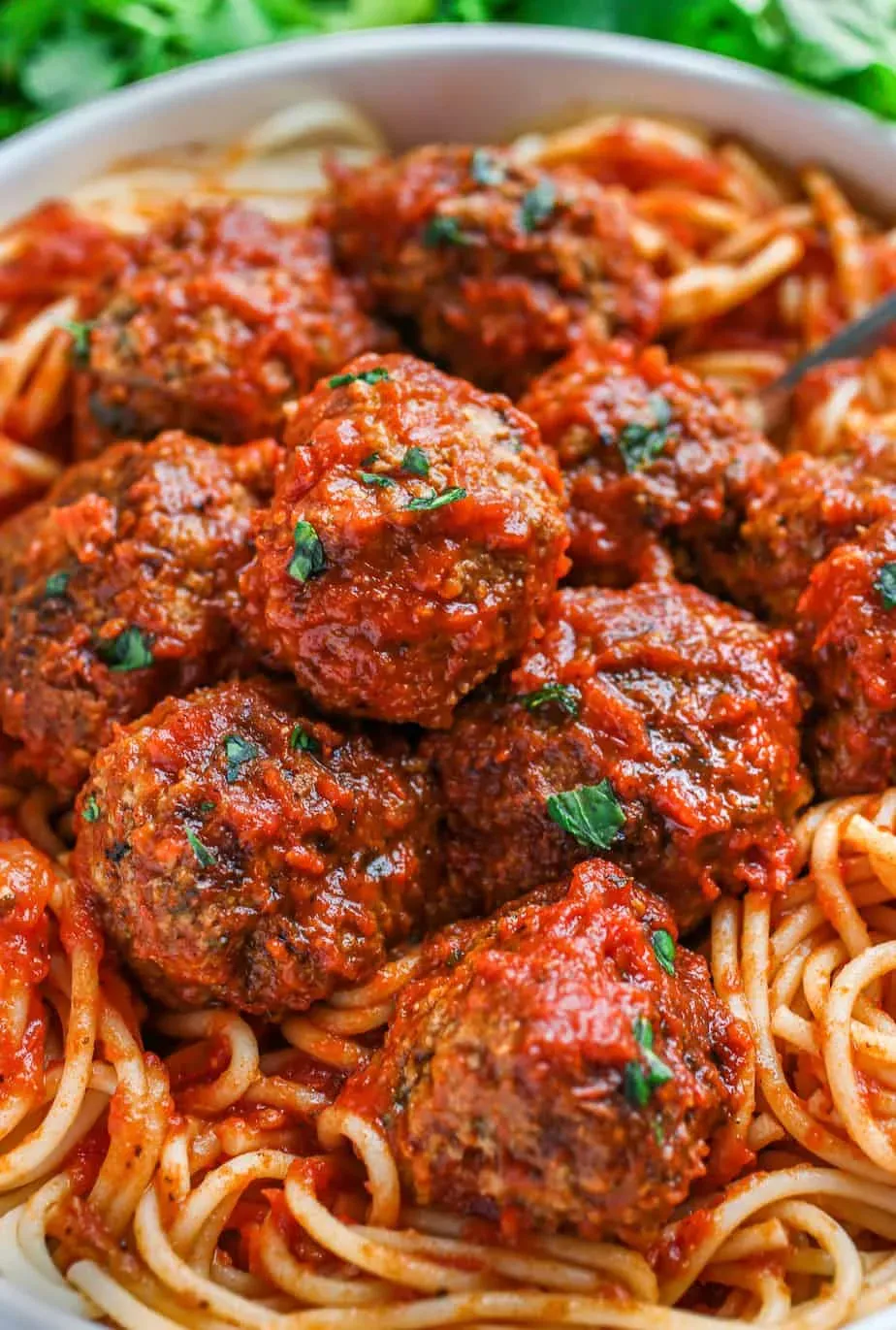Table of Contents
Let's be honest. You've probably had your share of dry, sad meatballs drowning in bland sauce. Maybe you've tried a few recipes, hoping for that perfect bite, that tender texture, that rich, comforting flavor you remember from grandma's kitchen or a really good Italian joint. And maybe, just maybe, you've ended up disappointed. Building the best recipe for Italian meatballs and sauce isn't just about throwing ingredients in a pot; it's a bit of a science, a bit of an art, and frankly, a lot of patience. Forget those quick fixes promising "authentic" flavor in 20 minutes – real depth takes time. We're going to walk through the steps that actually deliver: how to create meatballs that stay juicy, a sauce that sings, and how to bring them together for a dish that will make people ask for seconds (and thirds). No more meat hockey pucks. No more watery tomato soup. Get ready to ditch the mediocre and finally master the best recipe for Italian meatballs and sauce you've ever made.
Mixing, Rolling, and Browning: Steps for the Best Italian Meatball Recipe

Mixing, Rolling, and Browning: Steps for the Best Italian Meatball Recipe
Getting Your Hands Dirty: The Mixing Phase
Alright, let's talk about the foundation of the best recipe for Italian meatballs and sauce: the meatballs themselves. It all starts in the bowl. Don't just dump everything in and go at it like you're kneading bread dough. That's a rookie mistake that gets you tough, dense meatballs. You want tender little clouds of meaty goodness, not rubber balls.
The key here is gentle mixing. Use your hands – it's the best tool for feeling how the mixture is coming together. You're looking for everything to be just combined, not overworked. We're talking about ground meat (a mix of beef, pork, and sometimes veal is classic, or just beef if you prefer, but make sure it's got some fat, 80/20 is good), breadcrumbs (soaked in milk or water for tenderness), eggs (binders!), grated Parmesan (flavor bomb), finely minced garlic and onion, fresh parsley, salt, and pepper.
Some folks add a pinch of red pepper flakes for a little kick. The point is, get all your ingredients ready, then mix them together lightly. Think of it like fluffing a pillow, not trying to flatten it.
Rolling and Giving Them a Little Color
Once your mixture is ready, it's time to roll. Aim for consistency in size. This ensures they cook evenly. Nobody wants one giant meatball and three tiny ones. Walnut-sized is a good benchmark, maybe slightly larger if you're feeling ambitious. Don't pack them super tight; a gentle roll is all they need. Lay them out on a baking sheet as you go.
Now, the browning step. You'll hear arguments about whether to bake or pan-fry before they hit the sauce. Pan-frying gives you that beautiful crust and develops deep flavor – the Maillard reaction is your friend here. A little olive oil in a pan over medium-high heat is all it takes. Brown them on all sides until they're nicely colored. They don't need to be cooked through at this stage; they'll finish simmering in the sauce. Browning is crucial for adding that extra layer of flavor to your best recipe for Italian meatballs.
Ever skipped the browning step and just dropped raw meatballs into sauce? Yeah, they cook, but they lack that rich, developed flavor. It's like showing up to a party in your pajamas – technically you're there, but you're not really *there*.
So, before we move on to the sauce, consider these points:
- Are you using the right meat-to-fat ratio for juicy meatballs?
- Did you soak your breadcrumbs?
- Are you mixing gently, or are you building biceps?
- Are your meatballs roughly the same size?
- Are you committing to browning them for maximum flavor?
Simmering Perfection: Crafting a Rich, Flavorful Tomato Sauce

Simmering Perfection: Crafting a Rich, Flavorful Tomato Sauce
Building the Flavor Foundation: The Sauce Base
you've got your beautifully browned meatballs waiting in the wings. Now, for the soul of the dish: the sauce. Just like the meatballs, the sauce in the best recipe for Italian meatballs and sauce isn't rocket science, but it does require attention. Skip the jarred stuff if you want something truly great. Start with quality tomatoes. Crushed San Marzanos are the gold standard, but good quality canned diced or whole peeled tomatoes (that you crush yourself) work too. Don't just open a can and pour.
The flavor starts with a soffritto – a gentle sauté of finely diced onion, carrot, and celery in olive oil. Some folks skip the carrot and celery, just using onion and garlic. That's fine, but the carrot adds a subtle sweetness that balances the acidity of the tomatoes, and the celery adds a background complexity. Cook these low and slow until they're soft and translucent, not browned and crispy. Then, add plenty of minced garlic and cook for just a minute until fragrant – don't burn it, or it turns bitter. A splash of red wine, if you like, can add depth at this stage, letting it bubble and reduce.
The Long Simmer: Where Magic Happens
Now, add your tomatoes to the pot. Stir in a bay leaf, maybe a pinch of sugar if your tomatoes are particularly acidic, and season with salt and pepper. Bring it to a simmer, then lower the heat, cover partially, and let it do its thing. This is where patience pays off. A quick 20-minute simmer isn't enough to develop that rich, layered flavor you're after for the best recipe for Italian meatballs and sauce. You want it to bubble gently, thickening and concentrating. Aim for at least an hour, ideally longer. The longer it simmers, the deeper the flavor becomes.
This slow cook allows all those initial flavors from the soffritto and tomatoes to meld into something truly special. Stir it occasionally to prevent sticking. Taste and adjust seasoning as it cooks. Does it need more salt? A little more pepper? Maybe a tiny pinch more sugar? Your palate is the final judge. Don't rush this step; it's non-negotiable for a truly great sauce.
- Did you start with quality tomatoes?
- Did you build your flavor base with a proper soffritto?
- Are you letting the sauce simmer long enough to develop flavor?
- Are you tasting and adjusting seasoning as it goes?
Marrying Flavors: Combining Meatballs and Sauce for the Ultimate Dish

Marrying Flavors: Combining Meatballs and Sauce for the Ultimate Dish
The Moment of Truth: Bringing Them Together
Alright, you've got your perfectly browned meatballs, little nuggets of potential flavor. Your sauce has been simmering, deepening its color and aroma, becoming something truly magnificent. This is where the magic happens, the step that elevates a decent dish to the best recipe for Italian meatballs and sauce. You don't just serve the meatballs *on* the sauce; you cook them *in* it. This isn't just a presentation thing; it's fundamental to flavor and texture.
Gently, oh so gently, place those browned meatballs into your simmering tomato sauce. Make sure they're mostly submerged. The sauce needs to embrace them, not just sit under them. If your sauce seems a little thick, you can add a splash of water or broth to ensure they can swim a bit. The heat should be low enough that it's just a gentle bubble, a lazy simmer.
The Long Embrace: Simmering Together
Now comes the patience part, again. Cover the pot partially and let those meatballs simmer in the sauce for at least an hour, maybe even two. Why so long? Because this is where the meatballs absorb the flavors of the sauce, and in turn, they release some of their meaty goodness into the sauce. It's a beautiful exchange, a culinary partnership. This long simmer tenderizes the meatballs further, making them incredibly soft and succulent. It's the difference between a firm meatball and one that practically melts in your mouth.
Resist the urge to stir too vigorously, or you might break up your precious meatballs. A gentle nudge now and then is fine. This prolonged cooking time is absolutely essential for achieving the depth of flavor that defines the best recipe for Italian meatballs and sauce. It's not a sprint; it's a marathon for your taste buds.
- Are your meatballs fully submerged in the sauce?
- Is the sauce at a gentle simmer, not a rolling boil?
- Are you giving them at least an hour to cook together?
- Are you resisting the urge to stir constantly?
The Grand Finale: Flavors Intertwined
After an hour or two, your kitchen should smell incredible. The meatballs will be plump and tender, infused with the rich tomato flavor. The sauce will be even more robust, having gained character from the meatballs. This is the point where everything comes together. Taste one of the meatballs – it should be soft all the way through, bursting with savory, slightly sweet, and tangy notes. The sauce will cling to it beautifully.
This is also a good time for a final taste and adjustment of seasoning. Does it need a little more salt? A grind of black pepper? Maybe a sprinkle of fresh basil or oregano stirred in at the very end for brightness? Serve these beauties hot, ideally over pasta that's been tossed with a little of the sauce first. This combination, the tender meatballs and the deeply flavorful sauce, is the culmination of your efforts, proving that this truly is the best recipe for Italian meatballs and sauce you've ever made.
Beyond Spaghetti: Serving and Storing Your Amazing Meatballs

Beyond Spaghetti: Serving and Storing Your Amazing Meatballs
More Than Just Pasta: Creative Ways to Serve
so you've just nailed the best recipe for Italian meatballs and sauce. Your kitchen smells like a dream, and you're ready to eat. While spaghetti is the classic partner, don't feel limited. These meatballs are versatile. Think outside the noodle box. Slice them up and pile them onto crusty bread for a killer meatball sub, maybe with some melted provolone. Or serve them as appetizers, speared with toothpicks at your next gathering. They're fantastic over creamy polenta, or even mashed potatoes if you're feeling adventurous. Heck, I've even seen them tucked into omelets (don't knock it till you try it). The rich, savory sauce and tender meatballs are the stars, and they play well with a lot of different bases.
Keeping the Goodness Going: Storing Your Leftovers
Let's be real, sometimes making the best recipe for Italian meatballs and sauce yields a generous amount, which is great because leftovers are a gift. Proper storage is key to enjoying them later without sacrificing quality. Once cooled, transfer the meatballs and sauce to an airtight container. They'll keep beautifully in the refrigerator for 3-4 days. For longer storage, the freezer is your friend. Portion the meatballs and sauce into freezer-safe containers or heavy-duty freezer bags. Squeeze out as much air as possible to prevent freezer burn. Thaw them overnight in the fridge before gently reheating on the stovetop, adding a splash of water or broth if needed to loosen the sauce. They freeze like a charm, meaning you can pull out a taste of heaven any time you need a quick, comforting meal.
Got leftovers? Consider these storage methods:
- Refrigerate in an airtight container for 3-4 days.
- Freeze in freezer-safe containers or bags for up to 3 months.
- Thaw overnight in the refrigerator before reheating.
- Reheat gently on the stovetop or in the microwave.
Your New Go-To Meatball Mastery
So there you have it. We've mixed, we've rolled, we've simmered, and hopefully, you've avoided setting off the smoke alarm. Making the best recipe for Italian meatballs and sauce isn't a weeknight dash; it's a weekend project, a labor of love, or maybe just a way to avoid doing laundry for a few hours. But the payoff? A pot of rich, tender meatballs swimming in a sauce that actually tastes like something. No more settling for dry, sad little orbs. You've put in the work, followed the steps, and now you get to enjoy the results. This isn't just dinner; it's proof that a little effort in the kitchen can make a big difference. Go ahead, dish it up. You've earned it.